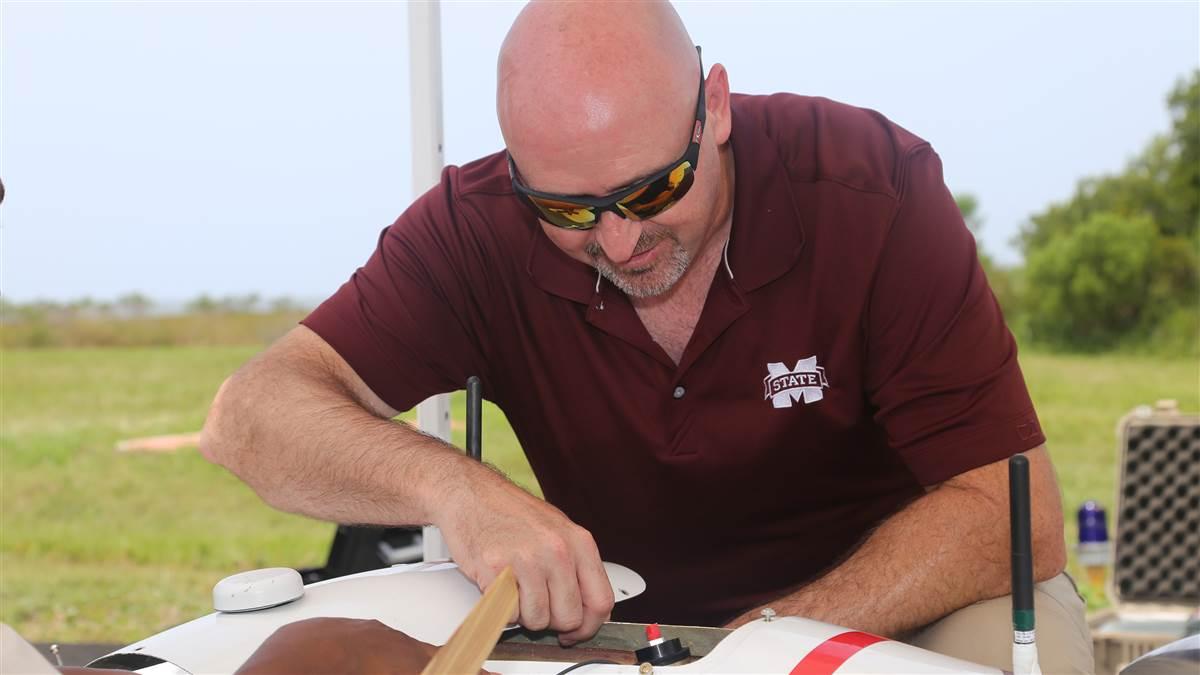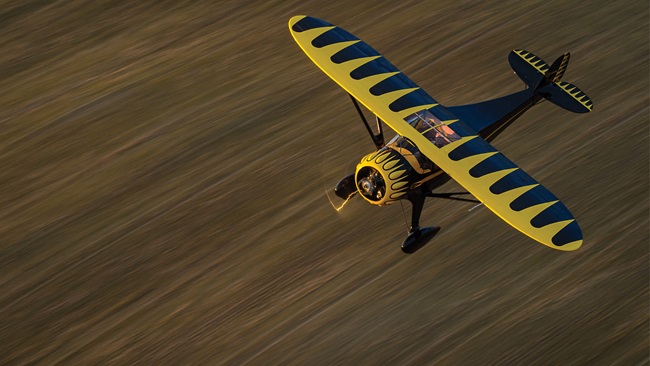Five questions for Dallas Brooks
Dallas Brooks is the new chairman of the Association of Unmanned Vehicle Systems International board of directors, and director of the Raspet Flight Research Laboratory at Mississippi State University, which is the core member of the FAA Center of Excellence for UAS research, so he occupies key roles in ongoing research on drone technology development. Brooks fielded five questions from AOPA Drone Pilot.
Also a retired U.S. Air Force lieutenant colonel who served in several roles including the Air Force chief of UAS integration from 2006 to 2010, Brooks has decades of hands-on experience in the development of unmanned aircraft technology and integration into the airspace.
Not in the way that they have, at least not 10+ years ago. In the Air Force, we were largely focused on endurance as the value multiplier for UAS…the ability to stay on-station far longer than a human pilot. That persistence came in the form of larger, highly capable aircraft, rigorously constructed, with ability to carry large payloads. We could see the obvious transition to commercial applications in that space for broad-area use. At the time, many of us quite honestly looked at smalls as useful, but application-limited due to their reduced endurance. From a pure physics standpoint, that’s still true—but what we didn’t foresee was how the utility and accessibility of small UAS would overtake persistence as the key factors that drove acceptance. I’m still a strong believer that endurance will win the hearts and minds of what I call “industrial” customers—those industries that need the heavier lift and longer endurance to truly replace manned aircraft. But the utility of smalls has proven to be so tremendous, and the technology so accessible, that endurance simply isn’t the discriminator that we thought it would be.
Thinking about the coming 10 to 20 years, do you expect that technology and engineering innovation will provide the safety solutions needed to integrate UAS in the National Airspace System, or will a trained human pilot remain critical for safe operations?
I believe in both. The advances in automation that are driving the UAS industry help improve safety throughout aviation, for manned aircraft and unmanned. We’ve been flying unmanned for years—if you don’t believe me take a look at the flight management system on a 787 or A380. Those aircraft are completely capable of end-to-end flight in a managed environment. But while they can fly virtually unmanned, they don’t. A big reason for that is the consequences of failure. Systems sometimes fail, and when they do we can’t be willing to risk to hundreds of lives in trade for the benefits of automation. In such situations, I see professional pilots continuing to play a critical role for many years, simply because of the immense responsibility and the severity of the consequences.

But for certain applications, the consequences are actually reduced by using unmanned aircraft. I’m thinking of high-risk operations such as power line inspections, wildfire suppression, overflying chemical spills. Those situations are extremely hazardous to a pilot, and they often occur in places that are very sparsely populated or even access-controlled. In those situations, using UAS actually reduces the overall risk, because the person most likely to be injured or to die is the pilot. Those kinds of applications can be, and should be, certified for unmanned use today with appropriate and achievable mitigations.
For other applications, such as small package delivery, we’re close. I do see that happening in some environments well within that 10-year timeframe.
You were deeply involved in the acquisition and operation of UAS for the military, but have you ever flown a quadcopter and taken a “dronie?”
I have. While I had flown a few very small RC aircraft, the first quadcopter that I actually owned was one of the early Parrot ARs. My wife bought it for me as a Christmas present, and I had a blast with it. I did find that it had a certain magnetic attraction to the power and cable lines that ran to our rural home. You would think that it would be extremely hard to hit a cable that is less than two inches thick, 20 feet in the air, with a drone. I’m living proof that it isn’t.
Do you think the manned aviation community, pilots in particular, can contribute to the development of UTM and safe integration of UAS, or will it mainly be a job for engineers, regulators, and technology specialists?
I think that manned pilots have a tremendous amount to contribute. They grew up in a culture of aviation safety, and that’s something that’s difficult to replicate in a commoditized drone industry. I’ll use my personal experience as an example. I got my private pilot license 30 years ago at a military aero club while I was stationed in Japan. One of the great things about a club environment is that the aviation culture permeates everyone and everything. There is a support network of really, really great people to fly with and to learn from. Veteran pilots give freely of their time and experience to help younger people mature into a culture of safety, of maturity, of responsibility. There’s tremendous value in that culture, because in order to get the benefits, you have to subject yourself to the discipline and accept the responsibility. This is true in aero clubs, in flight schools, and even in AMA model aircraft clubs.
For unmanned, clubs have largely been replaced by online communities. These have their own unique value—information disseminates instantly, you have access to a national network instead of local, and you have the ability to multi-point network and build instant focus communities to address specific challenges. It’s wonderful in that sense. What you lose, however, is the discipline—you can take the information you want without caveats, without conditions, and apply it instantly. Sometimes that makes it easy for people to do irresponsible things. Not because they are irresponsible people, but because they could get to the information on how to do something without having to truly understand the context and the consequences of what they are doing.
While you don’t have to be a manned pilot to understand and embrace a safety culture, I think that the manned pilot community has so much to share with, and to contribute to, the unmanned community. We all share the same sky, and we must all consider the impact of what we do on everyone. That’s what a community does—they look out for one another.
Is there a mission that UAS are performing today that you never would have dreamed of 25 years ago?
There are so many, it’s hard to choose just a few. What’s important to me is not what UAS are doing as much as why they are doing it. I grew up reading science fiction novels. My favorites were Heinlein, Bradbury, and Asimov. Many of them were written a generation before, but what always resonated with me was how these writers could take something very technical, such as long-range space travel or robotics, and present the challenges and the achievements in a very human way—in the end, the technology only existed to advance and enhance the human experience. I’m gratified that that’s what we’re seeing today with UAS. “Unmanned” is such a misnomer. The aircraft might not have anyone on board, but its purpose is to enhance the lives of people. It might be doing something that’s literally life-saving, such as delivering medicine to someone trapped in an inaccessible location. It might be something more simple, such as capturing the wonder of a beautiful aerial vista or the magic of a personal moment. But whatever it is, it was done with the UAS as a conduit, as an extension, of a human—to accomplish a human purpose. In the end, that’s all that matters.
AOPA Drone Pilot is a free, biweekly newsletter created for anyone with interest in drone technology, training and safety, policy, and industry news. Sign up now to receive the next issue; you may unsubscribe any time.



